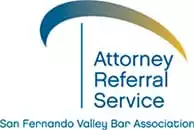What is a Qualified Personal Residence Trust?
Have you heard of a Qualified Personal Residence Trust? It may be worth considering while estate planning.
Learn further here.
Introduction
If you own your own home, chances are it is one of the most valuable assets you have – now and in your entire lifetime. Of course, it is also the asset that makes up the largest portion of your taxable estate.
There are so many different aspects to estate planning that will allow you to handle your assets in the most beneficial way. And, who knows – maybe a Qualified Personal Residence Trust will be a part of that plan. Let’s take a look at what it is.
Understanding a Qualified Personal Residence Trust
A Qualified Personal Residence Trust (QPRT) is one that allows you to transfer your property to your future beneficiary and benefit from the discount of a gift tax. You place your home in the QPRT with instructions that you will remain in the home until a specified date. Once that date comes, the property ownership rights will be transferred to the beneficiary which may be a person, persons, or another trust.
Because it was placed in the QPRT, you will not be responsible for taxes on any value that the home has accrued between the time it was put into the trust and the time the property is transferred. In other words, this taxable gift is the value of the residence placed in the QPRT minus the value of the retained income interest.
It is important to note that a QPRT is an irrevocable trust. And that means it cannot be changed or revoked after it is put in place. So you will definitely want to work closely with an attorney who specializes in estate planning to ensure that everything is written out properly.
Pros of a QPRT
Transferring a property to a Qualified Personal Residence Trust comes with a few pros that you may want to take notice of – especially if you are on the fence about whether or not you should choose this option as part of your estate planning.
Think of QPRT as planning for your future – and the future of your family. And if your intention is for your home to remain in your family for many years to come, this may be the best way to secure it.
Save Big. You can save a lot of money with a QPRT as it allows you to pay less in taxes. This transfer is viewed by the IRS as a gift, allowing you to benefit from the gift and estate tax. What’s more, it removes all future appreciation, too.
Continue to Use the Property. You get to continue living on the property just as you were without worry. Plus you can enjoy the tax deductions that come along with it.
Remove From Your Estate. When you transfer a property into a QPRT, you don’t have to include it as part of your taxable estate. It can be removed and you can save money.
Cons of a QPRT
Unfortunately, nothing can be perfect all the time. There are bound to be a few downfalls. Let’s take a look at a few of the cons associated with a Qualified Personal Residence Trust.
An Irrevocable Trust. As mentioned above, this trust is irrevocable. That means it cannot be changed. So, putting your assets into a trust such as this involves a very big commitment on your part. The terms cannot be adjusted nor can the trust be canceled once it is in place. That is until you die.
The Potential For Reversal. Speaking of death, if you – as the Grantor – die before the term stated in the trust expires, the estate tax benefits will be wiped out. The reason this happens is that upon your death, everything will be included in the estate.
No Collateral. If you still have a mortgage on the property you cannot refinance or take out another loan using your home as collateral as long as you have your property in a QPRT.
Taxes. Finally, income tax and other expenses are taxed to the grantor.
Risks Associated with a QPRT
Choosing to put your residence in a QPRT may sound like a wise decision. But it doesn’t come without risks. For instance, if you die before the end of the term, everything you have planned for and wanted to have to happen will go the way of the wind. This is a huge risk – and definitely, something to consider when determining how far out to put the term day. It can be any length of time you want, but some go as low as 5 years while others go as much as 20 years or more.
Rent is another thing you should be aware of. When your term is up and the property has been transferred to your heirs, you will still be responsible for paying rent to them at the fair market value. You do not have the right to live there rent-free.
Should you decide that you no longer want the home, putting it on the market and attempting to sell it could be a bit tough if it has been placed in the QPRT. You have two basic choices – invest in a new home with the proceeds from the sale or take payments on the proceeds in the form of an annuity.
Hiring an Estate Planning Attorney
When you hire an estate planning attorney you can feel confident that your assets, your family, and your future are all protected. There is a lot involved in setting up a trust and one wrong move can put everything in jeopardy. Don’t make this mistake.
Remember, your home may be your biggest asset. If you are interested in leaving it behind for your heirs, then taking the step to secure its transfer to them with some tax benefits thrown in there, too, is important.
Work with a trusted legal expert to handle all the details of your estate planning so that you can rest easy knowing that everything will be taken care of in the future. Maybe the QPRT is a great option for you – or maybe there is something else more fitting. You won’t know until you discuss your options with an estate planning attorney.
Are you in search for a certified attorney to represent you?
Let us help you find one today!


